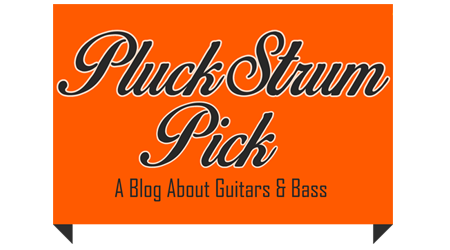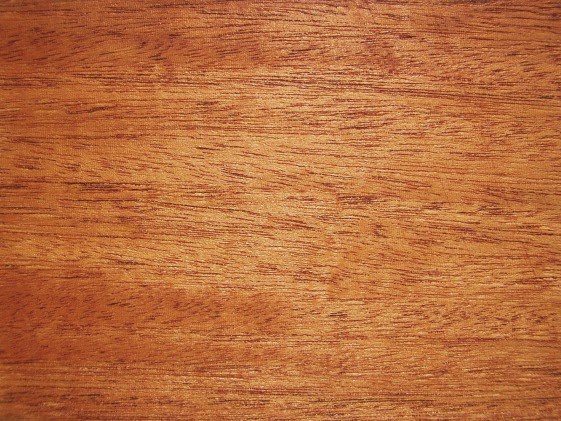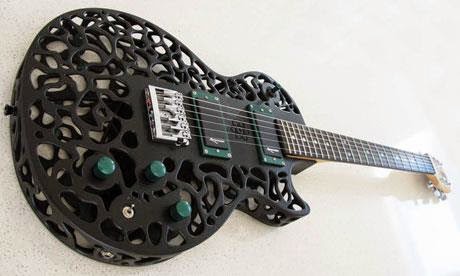Follow @PluckStrumPick
Saturday 28 February 2015
Girl, 15, Smashes Eruption
Follow @PluckStrumPick
How To: Set Up Your Guitar For Drop Tunings
If you're anything like me then you've probably experimented with drop tunings, only to realise you're not quite cool enough to pull off being in a metalcore band.
Since you're all probably significantly cooler people than me, i'm gonna' impart some wisdom regarding drop tunings. We've all been there, trying out that new hip song (maybe just out of morbid curiosity?) and realising you've got to drop your tunings to like... 'drop y' or something. So you put on a brave face, whip out your chromatic tuner (I like the Korg CA-1 as it's about the best bang for your buck), then grimace as your poor 09 guage slinkies rattle the fretboard and sound like wet mud. Well get ready for wisdom as over the next 3 steps i'll show you how to achieve that 'thicker than thick' drop C or even B used by so many modern metal bands.Step 1)
The first and possibly most important step is to select the right strings for a drop tuning. If your going to drop C then it's important to have thicker gauge strings such as these 12 gauge 'Not Even Slinky' strings from Ernie Ball, these are my personal favorites for this gauge. Thicker strings do not need to be as high tension as regular gauge strings, so they allow you to hit those lower tunings without sacrificing the tightness of the string. If you're really wanting to straddle the border between a guitar and a bass with a drop B then you should look at getting some baritone strings like these baritone slinkies from Ernie Ball or maybe an even lower gauge (hell, why not just slap on some bass strings and show those metalcore kids some real thud). Some people like to mix and match on strings, preferring lighter gauge strings for the 6th, 5th and 4th strings so it's easier to bend notes.Step 2)
After fitting a heavier gauge of strings you'll probably find that you need to adjust your bridge height to accommodate them. As the strings are thicker now you may find you need to raise your string action (blasphemy, I know) just a little to avoid fret buzz. If you have a tune-o-matic or 'gibson style' bridge there is a great tutorial for bridge adjustment here. For 'Fender style' bridges you'll need to adjust the individual saddles using a small 0.05 'hex key' (We calls em' allen keys here in the UK). For floyd rose style bridges use the guide here.Step 3)
You may find you'll need to adjust the neck itself via the truss rod as your guitar is now under different tension due to thicker strings. If you're in any way unsure regarding adjusting neck action via the truss rod then please, please, for the love of Hendrix, take it to someone who does. However if you're feeling brave then follow this guide. As i've said you should only adjust the neck if you're absolutely confident that you can do it, too many guitars have met their ends via over or under-tightening of the truss rod (it will literally snap the neck if you're not careful).So there you have it, your axe is sharpened and ready to hit those brutal low notes and you can blast out powerful palm muted power chords in those relentless rhythms. Now go, chug those insane breakdowns to your hearts content, brave women and men of modern metal.
Follow @PluckStrumPick
Thursday 26 February 2015
1000 Followers Competition!
So now that the twitter profile has reached 1000 followers i'll be running a little competition. The winner of the competition will get their mits on this goodie-bag worth £60/ $90:
To enter the competition you will simply need to follow the account and retweet the following tweet:
Follow @PluckStrumPick
To enter the competition you will simply need to follow the account and retweet the following tweet:
Competition to win a £60/ $90 guitar goodie-bag! Retweet and follow to enter! Details here: http://t.co/oMYKjJ3V6R
— Guitar & Bass (@PluckStrumPick) February 26, 2015
I'll draw a winner at random from those who have retweeted and followed the account. I will draw the winner on March 15th 2015. I will only be able to draw a winner from Europe or North America. So if you're not either in Europe or North America you can NOT enter the contest, sorry for the inconvenience. Once i've drawn a winner at random I will follow and DM that person for postage details. You only need to retweet one of the tweets to enter. Thanks for following and good luck!Follow @PluckStrumPick
Wednesday 25 February 2015
Guitar Hero To Make A Comeback?
So it looks like Guitar Hero is making it's return. I can certainly reminisce on many an evening challenging friends as well as slobbing it up in boxer shorts trying to beat my high-score. Full report from The Guardian here.
You can buy Guitar Hero 6: Warriors Of Rock here.
Follow @PluckStrumPick
"Gaming news site Kotaku reports that Activision could announce a new title at the giant E3 games convention in Los Angeles in June.
I'm not sure it can ever recapture former glory, there is probably a good reason sales declined. I'm still fairly certain i'll be buying a copy though, because being good at plastic guitar is super easy compared to being a legitimately good guitarist. So i'm fairly certain I'll be bedroom rockin' once again when this is released.Launched in 2005 and originally developed by music specialist Harmonix, the Guitar Hero series became a major entertainment phenomenon, selling more than 25m copies and kickstarting a huge industry trend for audio gaming."
You can buy Guitar Hero 6: Warriors Of Rock here.
Follow @PluckStrumPick
Fender P-Bass Review Coming Soon!
I'll be doing a review of the Fender Standard P-Bass soon! I really can't wait to play it, classic design and absolutely gorgeous in 'Lake Placid Blue'. It's a shame my bass playing skills won't do it justice! Let me know on here or on Twitter about other stuff you'd like me to try and review and I'll see what I can do. I'm also going to be running a competition on Twitter when the account hits 1000 followers and I'm open to suggestions of prizes, I was thinking of having a goodie-bag of guitar accessories as the prize. If you've got any other suggestions then please let me know!
Follow @PluckStrumPick
Follow @PluckStrumPick
Domire One Handed Use Capo
I've had a Domire Quick Change capo for a while now, before this I had a hand tightened capo that used a screw and I was loath to use it at times because of the inconvenience. The Quick Change capo is great to use as it's a spring loaded mechanism that you can apply to your guitar's fretboard using only one hand if you wanted, snazzy. It's super easy to use and applies even pressure across each string, an issue i've had with previous budget capos. Uneven pressure can cause the tuning to sound a little bit off. It comes in a great range of colours but i'm a boring fart and plumped for black. The only issue I really have with the capo is that the paint job is a little bit sketchy, i've not got any chips yet but it does seem like a few drops on hard flooring would scuff the paint. However for the price its hard to complain, it's a sturdy little capo and it's so convenient that I wonder why I even bothered with those screw in capos.
Click here if you'd like to buy one.
Follow @PluckStrumPick
Tuesday 24 February 2015
Wood: Does It Matter?
A hot topic for many of us, but does the substance that we stick strings and pickups on really matter?
I'm going to avoid controversy and say yes... and no. The materials we use to build guitars with are obviously important, you're unlikely to see a functioning guitar made from mashed potatoes (although I would definitely like to see you try and make one). A guitar needs to be made from reasonably rigid materials, too much flex and your tunings will be weird and I don't think a bent fretboard is ideal. But is the difference between mahogany and maple really that noticeable? Lets 'av a look.
Assume we're talking about an electric instrument that is amplified, a purist might argue that the type of wood is one part of the long ingredients list for the recipe for 'tone' and that it is a key aspect. They're right in that it will affect the tone of the instrument but the amount it can affect tone is in question. In a blind test of a maple bodied guitar of the same construction as a mahogany bodied guitar I would defy anyone to consistently pick which guitar is which. The differences in tone would be almost negligible, in my opinion. Where this logic gets contentious is when it comes to acoustic instruments (more on these later).
Where I feel the type of wood matters is the bearing it has on the weight and aesthetic of a guitar. There are very few things as visually pleasing as a book-matched, flamed or quilted maple top on an electric guitar. There are also few things as annoying as a guitar that would be better suited to a weightlifter because it's constructed entirely with dense woods,. whilst a guitar that is too light could have a negative impact on the feeling of quality.
Acoustic instruments have a more solid argument for the 'tone' that can be imbued by wood. An acoustic guitar amplifies itself using a hollow chamber under the strings, this means the vibrations of sound have to reverberate through this chamber. The character of the wood, especially the density of the wood, will have an impact on the reverberant quality of the chamber. A denser wood like maple will allow the reverberations to 'bounce' of the walls of the chamber more easily and would probably create a 'brighter' tone than a less dense open grained wood. In the case of acoustic guitars the wood has a direct impact on the type of sound produced.
What the f**k do I know anyway?! I'm still gonna' get that mahogany bodied LP and brag to literally all of my mates about how the tone is that much beefier because of it.
Follow @PluckStrumPick
Follow @PluckStrumPick
Labels:
Bass,
Discussion,
Guitar,
Guitar diy,
Mahogany,
Maple,
Tone,
Wood
Monday 23 February 2015
Lemon Oil: It's Good Stuff
Lemon oil is a favorite product of mine because it solves what is probably one of the most annoying problems with guitars and bass. That problem being dry fretboards. One good application of lemon oil with a lint free rag on the fretboard, making sure to really push the oil into the grain. Then left to dry for a few hours and I guarantee that your fretboard will feel as good or possibly even better than new.
Follow @PluckStrumPick
Follow @PluckStrumPick
Sunday 22 February 2015
Schecter C-1 Hellraiser Special Review
So I had a chance to play a friends Schecter C-1 Hellraiser Special. Prepare to be bombarded with my subjective thoughts.
This guitar is probably what I'd call an upper mid-range guitar, without being aware of the price at the time of playing it. I played the version which does not feature a floyd rose floating trem. It features a mahogany body, a three piece mahogany neck, a rosewood fretboard and the black cherry version that I played featured a very sexy quilted maple top (very reminiscent of a PRS if not quite as masterfully finished, gives it a very high-end look). The pickups are a pair of active EMG's an 81 and an 85 in the neck and bridge positions respectively.
It must be said that my friend has had this guitar for a number of years and he's not the type to really cherish things so its had a rough life. However the guitar has stood up to his lifestyle remarkably well, the finish looks great despite many bumps and bangs. If all of these guitars are this durable then I would definitely recommend it for a touring band or someone who might be a little clumsy.
As you can probably tell from the aesthetic and the choice of pickups this guitar is geared heavily (that's a pun, get it?) towards metal and hard rock. I played this through a Blackstar Series One 45 Watt combo. The heavier and metal tones that can be achieved with this guitar, in tandem with a high quality high-gain amp like the Series One, are mind-blowing. It really chugs the lows (great if you're into all that 'Djent' business) and the guitar can really squeal but still maintains good clarity when playing fast runs. Despite the fact that this guitar is clearly leveraged towards high output, face-melting and head-smashing metal it fares well when you want to take the pedal away from the metal (another pun... or is it word play?). When I opted for a cleaner tone the guitar performs well, the clarity that the pickups give make for nice and clear chords that have a little bit of an acoustic character. Though it can play the cleaner tones, I wouldn't recommend this guitar if your style mostly utilizes clean tones, It just doesn't compare to a strat or a tele in this regard.
The playability of this guitar was fantastic, my friend hasn't had it professionally set up so it's still factory set (which vindicates Schecters decision to manufacture their low and mid-range guitars in south korea and then have them set up in a USA factory). The action is nice and low for those that like to play quick, the neck has a reasonably small circumference (it's no wizard neck, but it can compete) and the fret board is nice and flat for quicker runs. The only downside i'd suggest is that the neck is finished with the same lacquer as the body so it occasionally slowed down my playing speed, as its a set neck I can see why it is this way but a better lacquer would have improved things. The guitar is a little on the heavy side due to the mahogany, it's not 60's Les Paul heavy but it still put pressure on my shoulder after an hour or two. All in all though its still a very pleasant playing experience.
Should you buy one? Yes, if it fulfils your needs. If you're after anything that isn't metal, then it's probably best to look elsewhere. The guitar sets out its stall pretty quickly in what it's trying to achieve, you know the second you look at it. If you're after a guitar that can fulfil just about any metal tone then it's a fantastic choice, it plays quick and has a beefy low-end and the high-end will literally scream if you want it to. It's clearly very durable too, so i'd be happy to suggest this as a gigging guitar.
All in all I'd give this guitar 7.5 out of 10.
Saturday 21 February 2015
3D Printing and The Future Of The Humble Guitar
This is an amazing 3D printed guitar doing something with it's design that I really doubt is achievable with the typical hand carved or even CNC machined guitars. I really feel that 3D printing will absolutely revolutionize instrument making and manufacturing in general. Eventually. As far as I know only plastics and metals can be used in current 3D printers, which is obviously a big sticking point for guitar and bass enthusiasts like you and I. Without getting into the age old 'tone wood' debate i'd say its fair to assume most players have an attachment to wood bodied guitars (how many metal or plastic body/necked guitars even exist? let alone how well they've sold?). However some engineers and scientists are predicting that 3D printers will be able to print almost any type of material within a decade or three, whilst also becoming significantly more able to print much more accurately (even to an atomic scale apparently). So the question is: What does the future hold for our beloved instrument manufacturers?
Follow @PluckStrumPick
Follow @PluckStrumPick
Friday 20 February 2015
Guitar & Bass: First Blog
This is a blog to accompany my twitter account for those occasions when 140 characters don't really meet the cut! On here I will post news, info and fun things relating to our favorite instruments. I will also give recommendations of instruments, gear, equipment and other things relating to guitars and bass. I'll also hopefully be running competitions and giveaways via twitter, so keep an eye out for those! I really hope you enjoy the content of this blog.
Follow @PluckStrumPick
Follow @PluckStrumPick
Subscribe to:
Posts (Atom)








.jpg)

